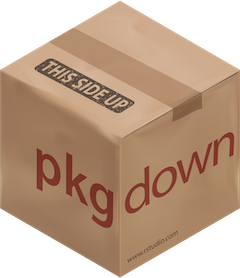
build_articles() renders each R Markdown file underneath vignettes/ and
saves it to articles/. There are two exceptions:
Files that start with
_(e.g.,_index.Rmd) are ignored, enabling the use of child documents in bookdownFiles in
vignettes/tutorialsare handled bybuild_tutorials()
Vignettes are rendered using a special document format that reconciles
rmarkdown::html_document() with the pkgdown template. This means articles
behave slightly differently to vignettes, particularly with respect to
external files, and custom output formats. See below for more details.
Note that when you run build_articles() directly (outside of
build_site()) vignettes will use the currently installed version of the
package, not the current source version. This makes iteration quicker when
you are primarily working on the text of an article.
build_articles(
pkg = ".",
quiet = TRUE,
lazy = TRUE,
override = list(),
preview = NA
)
build_article(name, pkg = ".", data = list(), lazy = FALSE, quiet = TRUE)
build_articles_index(pkg = ".")Arguments
- pkg
Path to package.
- quiet
Set to
FALSEto display output of knitr and pandoc. This is useful when debugging.- lazy
If
TRUE, will only re-build article if input file has been modified more recently than the output file.- override
An optional named list used to temporarily override values in
_pkgdown.yml- preview
If
TRUE, oris.na(preview) && interactive(), will preview freshly generated section in browser.- name
Name of article to render. This should be either a path relative to
vignettes/without extension, orindexorREADME.- data
Additional data to pass on to template.
Get started
Note that a vignette with the same name as the package (e.g.,
vignettes/pkgdown.Rmd or vignettes/articles/pkgdown.Rmd) automatically
becomes a top-level "Get started" link, and will not appear in the articles
drop-down.
(If your package name includes a ., e.g. pack.down, use a - in the
vignette name, e.g. pack-down.Rmd.)
External files
pkgdown differs from base R in its handling of external files. When building
vignettes, R assumes that vignettes are self-contained (a reasonable
assumption when most vignettes were PDFs) and only copies files explicitly
listed in .install_extras. pkgdown takes a different approach based on
rmarkdown::find_external_resources(), and it will also copy any images that
you link to. If for some reason the automatic detection doesn't work, you
will need to add a resource_files field to the yaml metadata, e.g.:
--- title: My Document resource_files: - data/mydata.csv - images/figure.png ---
Note that you can not use the fig.path to change the output directory of
generated figures as its default value is a strong assumption of rmarkdown.
Embedding Shiny apps
If you would like to embed a Shiny app into an article, the app will have
to be hosted independently, (e.g. https://www.shinyapps.io). Then, you
can embed the app into your article using an <iframe>, e.g.
<iframe src = "https://gallery.shinyapps.io/083-front-page" class="shiny-app">.
See https://github.com/r-lib/pkgdown/issues/838#issuecomment-430473856 for some hints on how to customise the appearance with CSS.
YAML header
By default, pkgdown builds all articles with rmarkdown::html_document()
by setting the template parameter. This overrides any custom settings
you have in your YAML metadata, ensuring that all articles are rendered
in the same way (and receive the default site template).
If you need to override the output format, or set any options, you'll need
to add a pkgdown field to your yaml metadata:
pkgdown: as_is: true
This will tell pkgdown to use the output_format (and options) that you
have specified. This format must accept template, theme, and
self_contained in order to work with pkgdown.
If the output needs a theme, you'll have to specify it even if it is
"default", and you might experience Bootstrap incompatibilities between
the output and pkgdown.
If the output format produces a PDF, you'll also need to specify the
extension field:
pkgdown: as_is: true extension: pdf
If you want to set an output format for all your articles, you can do that
by adding a vignettes/_site.yml, much like you would for an
rmarkdown website.
For example, you can backport some bookdown features such as cross-references
to all your articles by using the
bookdown::html_document2
format.
output: bookdown::html_document2: number_sections: false
Suppressing vignettes
If you want articles that are not vignettes, either put them in
subdirectories or list in .Rbuildignore. An articles link will be
automatically added to the default navbar if the vignettes directory is
present: if you do not want this, you will need to customise the navbar. See
build_site() details.
Figures
You can control the default rendering of figures by specifying the figures
field in _pkgdown.yml. The default settings are equivalent to:
figures: dev: ragg::agg_png dpi: 96 dev.args: [] fig.ext: png fig.width: 7.2916667 fig.height: ~ fig.retina: 2 fig.asp: 1.618 bg: NA other.parameters: []
Most of these parameters are interpreted similarly to knitr chunk
options. other.parameters is a list of parameters
that will be available to custom graphics output devices such
as HTML widgets.